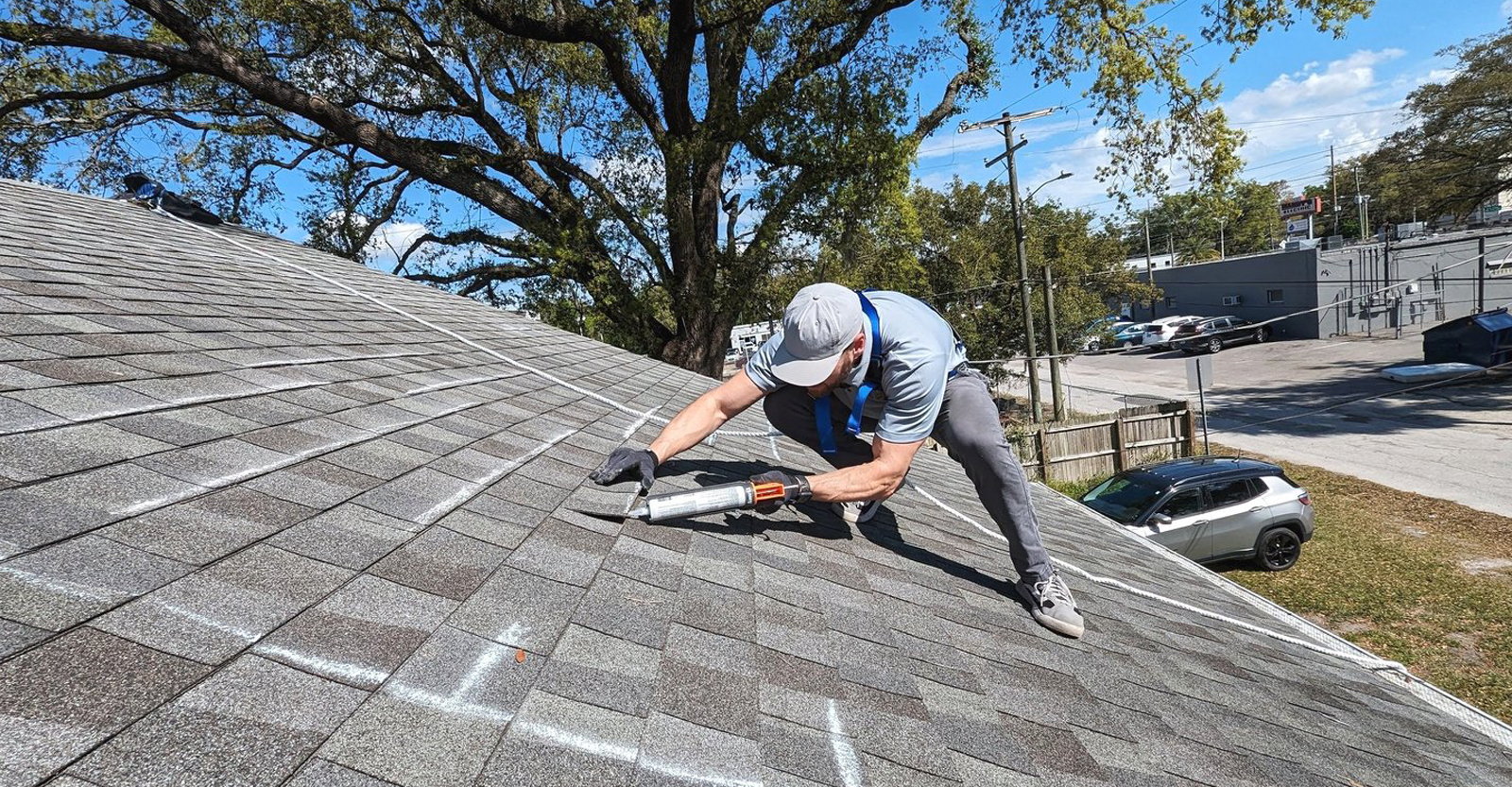
Resealing Loose Shingles: A Ground-Breaking Approach to Hurricane Mitigation
September 23, 2025 — Homeowner insights
Shingles are the roof’s main defense against hurricanes. When properly bonded together, shingles lie flat in an overlapping pattern, which keeps wind and water out.
But it only takes one loose shingle to compromise that protection. Strong winds can get under and detach loose shingles from the roof. Even a small amount of shingle loss can lead to tens of thousands of dollars in roof repairs and water damage to the home’s interior.
Because resealing loose roof shingles can reduce the risk of this damage, it is one of the most cost-effective hurricane mitigation investments a homeowner can make.
Now policyholders with SageSure can sign up for the chance to receive free shingle resealing through LiftLock’s Wind Defense service. LiftLock, a third-party provider of proactive home maintenance, designed the service to help prevent or reduce some of the most common and costly causes of storm-driven roof damage. Think of it as a “just-in-time” mitigation measure right before a major storm.
Homeowners who are selected to receive Wind Defense get a light debris clearing from the roof and gutters and loose shingles secured before a projected storm. Together, these services limit potential entry points for water intrusion and damage.
Currently, this is available to select policyholders with SageSure within 25 miles of the coast in Alabama, Florida, Louisiana, Mississippi, South Carolina, and Texas.
Let’s look at the science behind the program and its game-changing potential for policyholders in hurricane-exposed states.
How Can Resealing Loose Shingles Help Prevent Hurricane Damage?
Nearly 90% of all homes in the US have asphalt shingle roof coverings. When installed and resealed properly, shingle roofs can provide:
- Wind Resistance: Sealed shingles better withstand harsh weather, including hurricane winds and heavy rain. A good seal keeps shingles lying flat so that wind can’t get under the shingle, tear it off the roof, and leave an opening for water to get into the home.
- Waterproofing and Leak Prevention: Shingles provide a protective barrier against water when they are sealed to other overlapping shingles. Resealing them helps maintain this barrier, decreasing the chance of water entering the roof system and causing interior damage to the ceiling, walls, insulation, and electrical systems.
Loose shingles are one of the most common causes of roof cover loss during hurricanes, which is why resealing roof shingles is so important. It’s one of the quickest ways to shore up the home’s first line of defense against hurricane winds and water damage.
What Causes Loose or Unsealed Shingles?
Usually, one of several factors is the reason behind the loss of adhesive grip:
- Age: Over time, UV exposure causes the adhesive strip on the back of shingles to fail. For instance, one study posted in the Journal of Wind Engineering and Industrial Aerodynamics showed a 50 percent increase in the frequency of wind damage on shingle roofs older than six years.
- Temperature Changes: In climates where temperatures experience extreme fluctuations, shingles expand and contract, weakening the adhesive strip.
- Improper Installation: Shingles incorrectly installed initially or during repairs may not adhere correctly.
- Poor Ventilation: Heat and moisture can build up in attics causing the adhesive grip on shingles to weaken.
- Tree Limbs and Debris: Overhanging branches can rub against shingles, dislodging them and causing them to lose their seal. Debris, such as leaves and twigs, can trap water and weaken the roof’s integrity.
- Moss or Algae Growth: The growth of moss, algae, or other organic matter on the roof can lift shingles and compromise their seal.
Regular roof check-ups and repairs can find and fix weak seals early, preventing failures and potential damage.
How to Repair Loose Roof Shingles?
As part of its Wind Defense service, LiftLock helps identify loose shingles and bonds them together, ensuring a strong seal that keeps wind and water out.
Here’s how it works:
- A licensed and trained technician walks around the roof using a leaf blower to clear debris from the roof and gutters and identify any loose shingles.
- The technician marks every shingle that lifts from the leaf blower’s air with temporary chalk.
- Identified loose shingles are secured with a strong adhesive, typically creating a stronger bond than the original.
Help Reduce Your Hurricane Exposure: Have Your Roof Shingles Resealed
Interested in sharing the benefits of shingle resealing with your policyholders? Here are two ways to invite homeowners to take advantage of this hurricane mitigation investment.
- For eligible policyholders, Agent Portal will display the Wind Defense offer in the Property Services section. Make sure the Wind Defense box is checked to send an automatic invitation to the policyholder.
- For existing business, navigate to the Property Services section to send or resend an invitation.
Homeowners who sign up for Wind Defense stay enrolled until they receive the service, opt out of enrollment, or the program is discontinued.
Enrolled homeowners in the projected path of major storms are typically prioritized during selection.
If selected, a trained LiftLock specialist will provide Wind Defense services before a storm or as LiftLock has capacity. Completion of work depends on roof condition, roof accessibility, public safety measures, and other factors.
The Wind Defense program is offered by a third-party vendor LiftLock, LLC. SageSure does not represent or warrant the services provided. The Wind Defense program is not an insurance product and does not provide insurance coverage. All other terms and conditions of the policy apply. Wind Defense program availability may vary depending on service availability and other factors, including roof accessibility and public safety measures. This material is confidential, proprietary, and provided for informational and training purposes and intended for licensed insurance professionals, not consumers.
